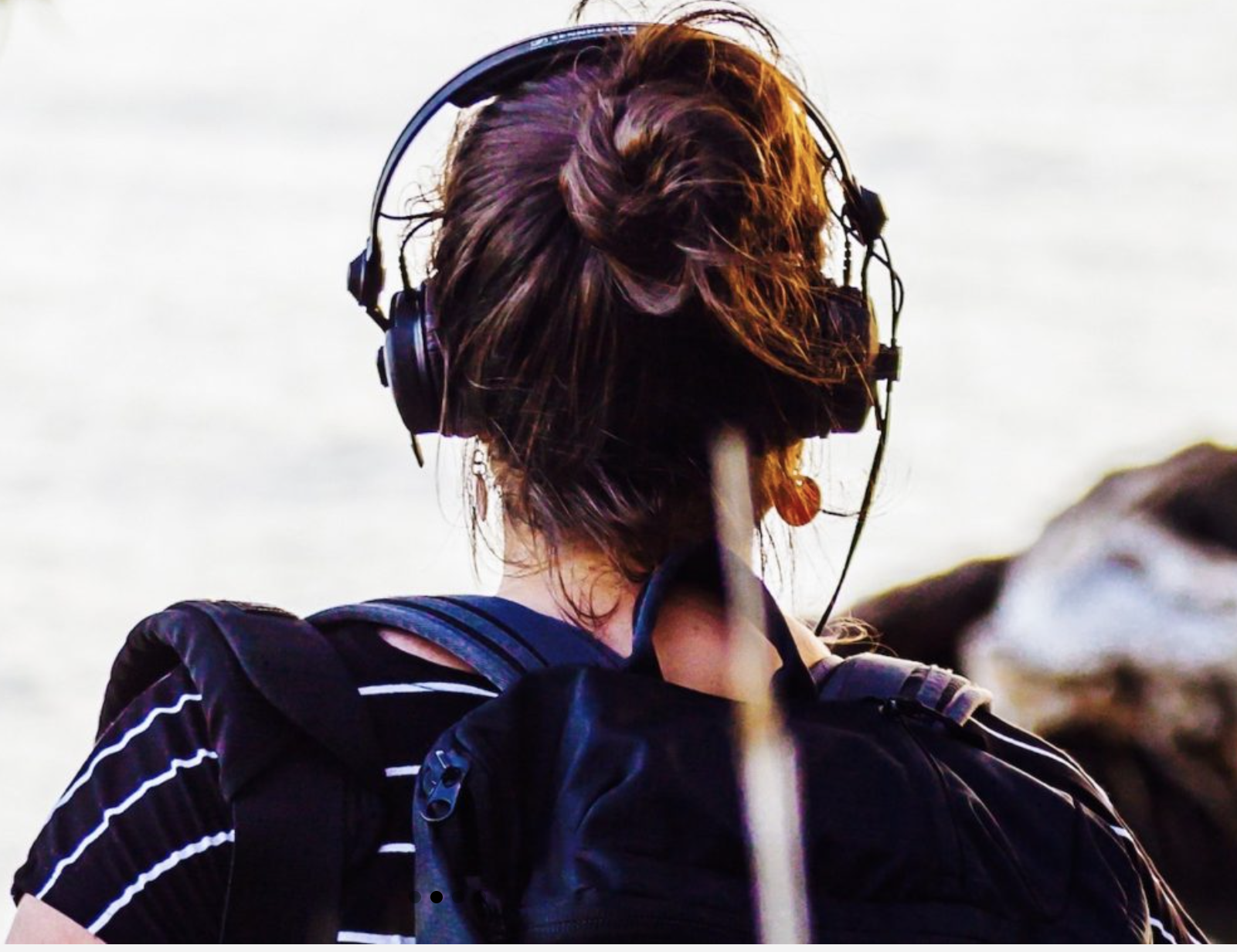Inspired by a love for environmental sound, Leah Barclay works at the intersection of Art and Science
SCCA is pleased to be collaborating with the University of the Sunshine Coast (UniSC) to expand The Refinery into a professional development platform supporting creative practitioners and businesses working at the intersection of art, technology, environment and design.
Dr Leah Barclay is the Discipline Lead, Design in the School of Business and Creative Industries and has been instrumental in positioning the school to be at the forefront of technology. No one is harder working, and it’s easy to wonder if she actually lives under one of the desks in UniSC’s Maker Space. Before preparing for a 12 hour run of teaching, we caught up with Leah…
Artist first and recognised for your work with science and technology, what was the starting point for your practice?
My background is in music composition and sound design. Concurrently I had a very keen interest in conservation and this passion led me towards environmentally engaged art and interdisciplinary practice. I started recording and working with technologies in the environment and this inspired my love for environmental sound which led me towards working at the intersection of art and science, exploring how sound could be a measure for ecological health, and developing installations, performances and touring artworks that document and explore different ecosystems across the planet.
Community engagement is also a thread through your practice and you've had long-term engagements with communities in places like South India and Vanuatu. How did this journey begin?
I've worked on the Sunshine Coast and in this region on and off for the last 20 years and I'm always inspired by the community and the incredible local ecosystems. I've been lucky to be deeply involved in events like Floating Land, Horizon Festival and Tree Line and have been grateful for these festivals supporting experimental art practice and ambitious ideas. My engagement with communities through these festivals, as well as my deep involvement in the early stages of Noosa Biosphere Reserve, was a catalyst for exploring what meaningful community engagement really looks like in creative practice. My research and creative practice is all about connecting with communities, with place, and having meaningful impact. Projects I’ve developed such as Biosphere Soundscapes and River Listening have provided me with opportunities to work with other international biosphere reserves, as well as to engage with the environment in different and experimental ways with river systems and reefs. The process around community engagement for me is always about care and reciprocity.
You like drawing attention to changing climates and fragile ecosystems through your work. What do you think is the power of the artist in responding to ecological conservation and regeneration?
It’s obviously really challenging times with everything that's happening on the planet and climate change. I think when we talk about, and think about climate communication, and the way the narrative of climate change has unfolded in the last decade in particular, we rapidly and desperately need better ways to understand and comprehend what's happening with our environment. I think creative practice is one of the most powerful ways for us to engage in an embodied way with what's happening on the planet and to really understand the depth of these changes and the urgent need for action.
Is art a catalyst for engaging different audiences and ways of seeing the problem?
Absolutely it speaks to different audiences. But I think especially with the kind of practice that I'm engaged with that includes deep listening, immersion, and embodiment, with extensive work in VR. It's a catalyst for other ways of knowing and learning, really being deeply immersed in ecosystems we might not traditionally have access to. If we can sense and feel and be immersed in The Great Barrier Reef, or the central Amazon Rainforest, that allows us to truly connect with the environment in an embodied way. So I feel creative practice is one of the most powerful tools to inspire this connection, care, respect, and hopefully in turn, reciprocity and action.
What’s your one piece of advice for creatives who desire this form of technological experimentation within their practice?
Be open minded and be driven by the project and the idea, not the technology. Rather than just picking up a piece of technology for the sake of experimentation, really think about what you want to do, what problem you are solving, and then build the technology around your idea in order to support it. The reality is we now have infinite possibilities with digital technology, it can be used for just about anything you want it to do, from sensing the skies with drones to recording the floor of the ocean, so be really driven by curiosity and project ideas.
What’s your hope for R|Artist Residencies?
I think this is a really exciting opportunity for knowledge sharing and collaboration, to have creative practitioners working on campus, embracing the possibilities of what we can do with the kind of research, technology and facilities that UniSC has. It is also a great opportunity to work with our new research cluster Creative Ecologies, to potentially collaborate on projects, solve creative problems and look at the potential of creative practice in connecting with place and exploring environments in new ways. It's an exciting time to be working with UniSC, we have an emerging research narrative around 'healthy people, healthy planet' and an exciting body of research making local and global connections with biosphere reserves.
R|Artist Residency: Natural Ecologies is open to mid-career and senior artists interested in critically applying new, sustainable technologies in their practice with a focus on ecological conservation and regeneration.
Applications close 24 March.
For more information contact us.


